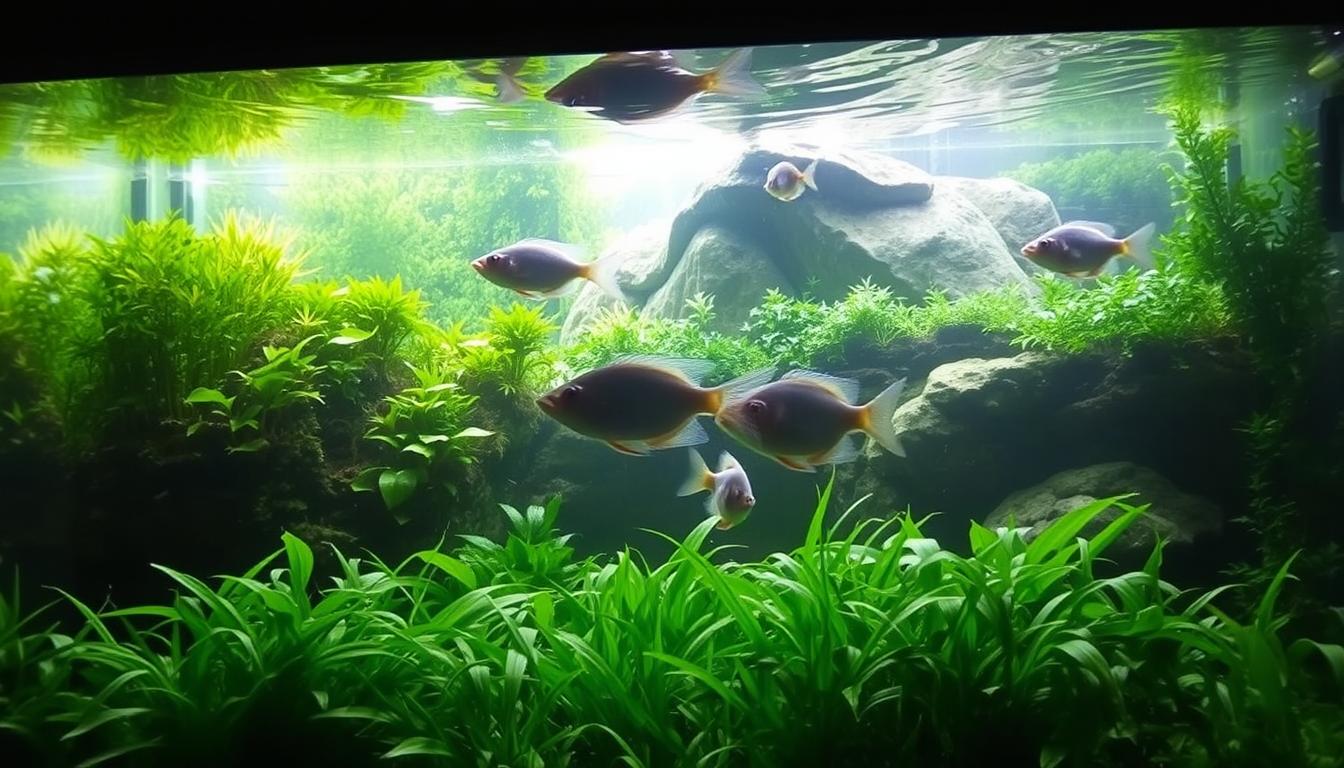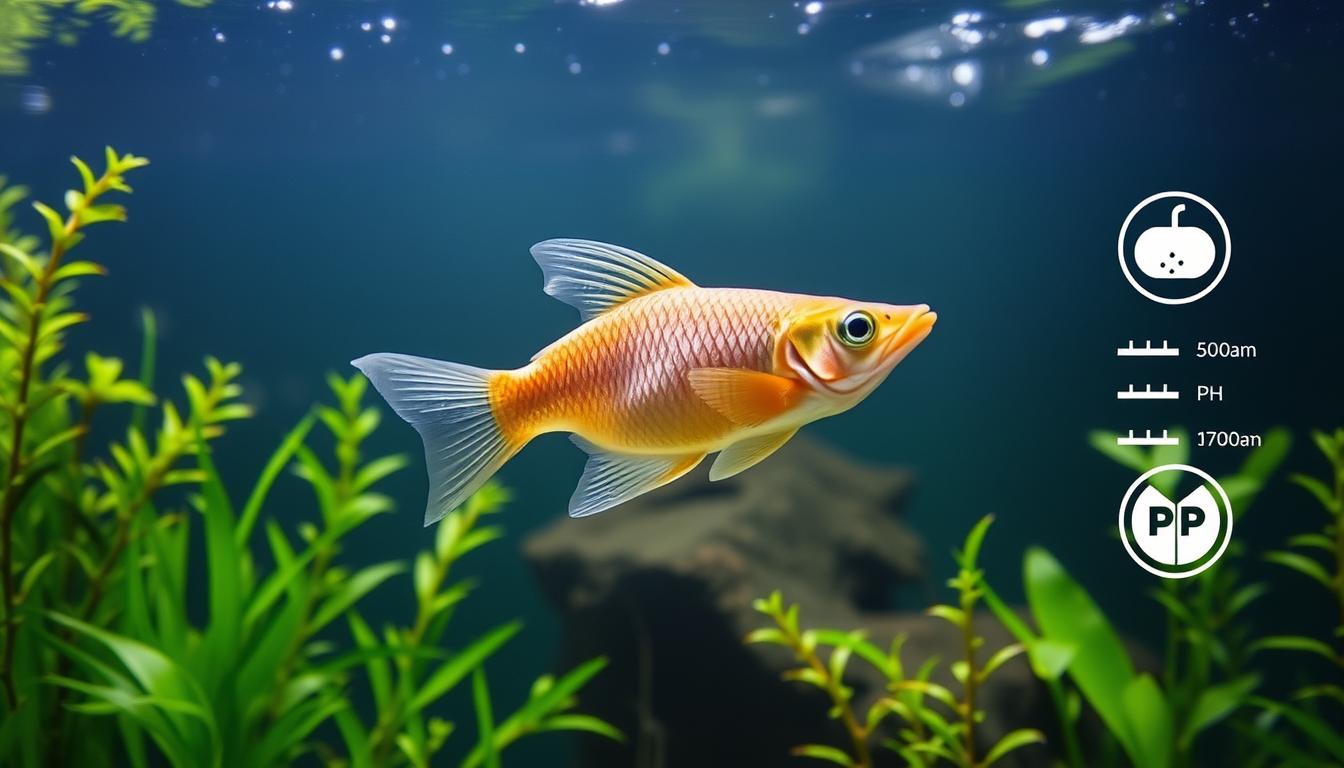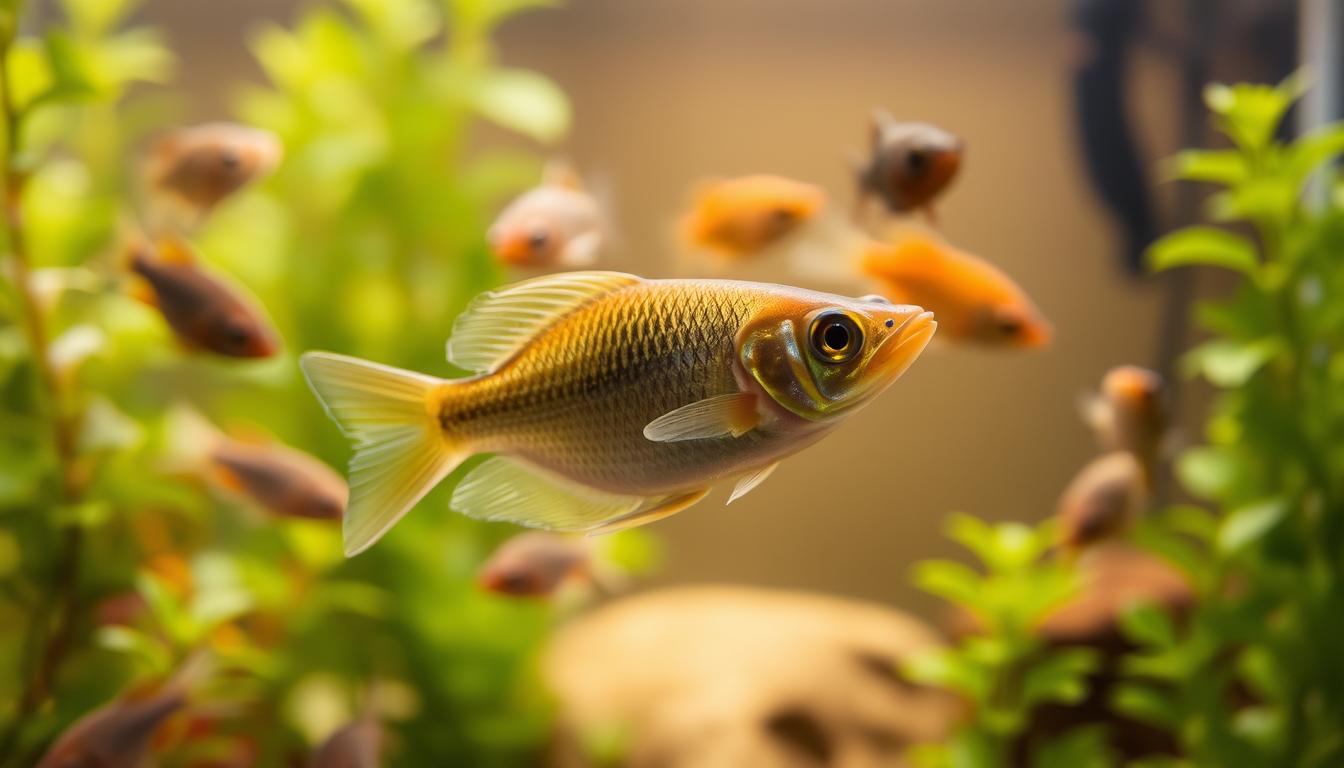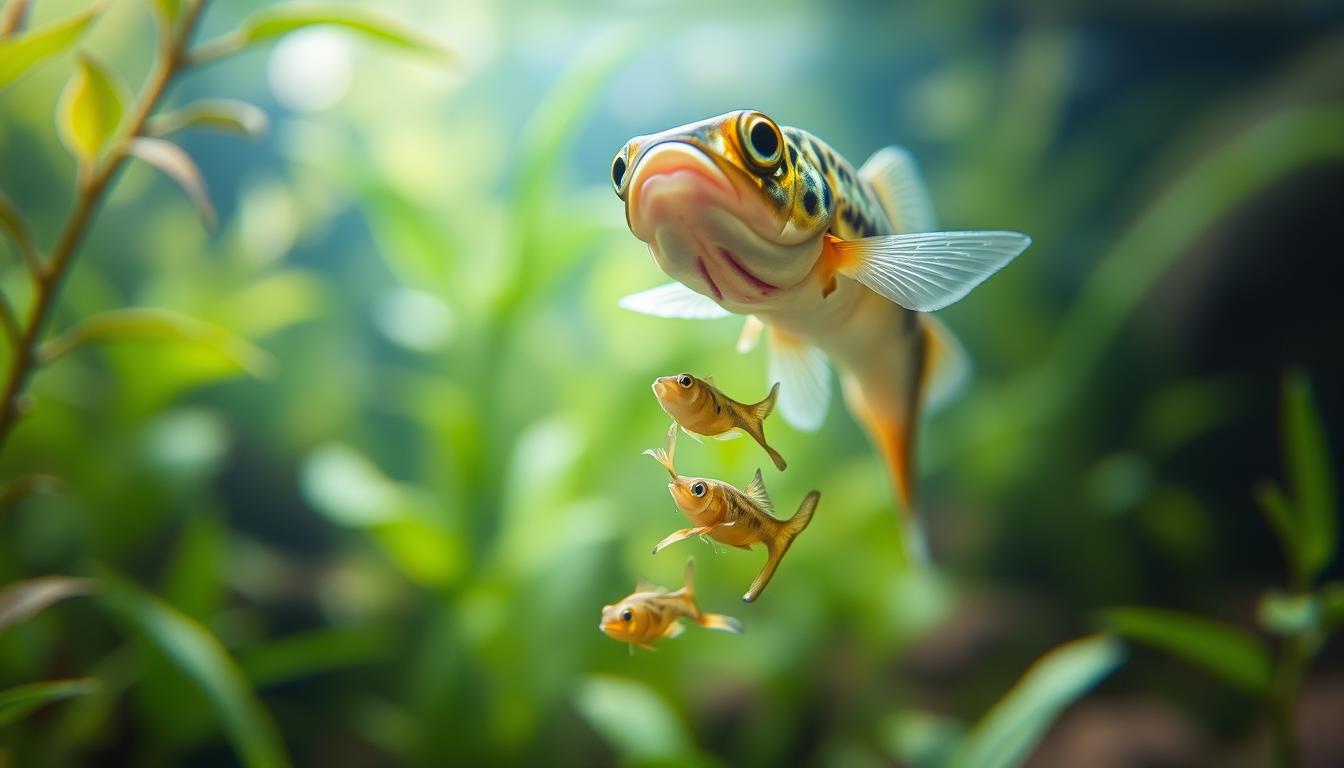What care do pregnant mollies need?
This post may contain affiliate links.
Are you wondering how to ensure the health and wellbeing of your pregnant mollies in your home aquarium? Caring for pregnant mollies requires attention to their specific needs, different from those of non-pregnant fish.
Pregnant mollies, known for their vibrant colors and active behavior, come in various species and color variations. Understanding their needs is crucial for maintaining optimal water parameters and tank setup.
Proper care during pregnancy can significantly increase the survival rate of both the mother and her offspring. This guide will walk you through the essentials of caring for pregnant mollies, from identifying pregnancy to preparing for birth.
Key Takeaways
- Understand the specific needs of pregnant mollies.
- Maintain optimal water parameters in your aquarium.
- Provide appropriate tank setup for pregnant mollies.
- Learn how to identify pregnancy in mollies.
- Discover the essentials for caring for newborn mollies.
Understanding Molly Fish Reproduction
Molly fish reproduction is a fascinating process that requires a good understanding of these popular livebearers. Mollies are part of the Poeciliidae family and are known for their unique reproductive characteristics.
Types of Molly Fish
There are about 20 recognized molly species, with the most common aquarium species being Poecilia sphenops (short-fin molly) and Poecilia latipinna (sailfin molly). Hybrids have been selectively bred to create various color and fin-type variations, such as black, dalmatian, lyretail, and others.
How Mollies Reproduce
Mollies reproduce as livebearers, giving birth to fully-formed, free-swimming fry rather than laying eggs. A male molly can be identified by his stick-shaped anal fin called a gonopodium, whereas a female has a fan-shaped anal fin. Males use their gonopodium to fertilize the eggs inside the female’s body.
Signs of Pregnancy in Mollies
Signs of pregnancy in female mollies include a noticeably swollen belly, a dark gravid spot near the anal fin that becomes more pronounced as pregnancy progresses, and behavioral changes like reduced activity and increased appetite. The gestation period typically ranges from 28 to 40 days, depending on water temperature and the specific species of molly.
Creating the Ideal Tank Environment for Pregnant Mollies
The health and safety of pregnant mollies depend significantly on the conditions of their tank environment. A well-designed tank can reduce stress, promote health, and ensure a successful pregnancy.
Tank Size Requirements
When it comes to housing pregnant mollies, the size of the tank is crucial. Depending on the type of molly fish, we recommend getting an aquarium that holds at least 20 gallons of water. However, for larger species like sailfin mollies, a 29- to 55-gallon tank is more suitable. A spacious tank environment not only reduces stress but also provides adequate swimming space for the pregnant mollies.
Essential Equipment for Pregnant Mollies
To create a comfortable and safe environment for pregnant mollies, certain equipment is essential. This includes a reliable heater to maintain temperatures between 75-80°F (24-27°C), an efficient filtration system that provides gentle water movement, and a secure lid to prevent jumping. The right equipment helps in maintaining stable water parameters, which is critical for the health of pregnant mollies.

Decorations and Plants for Safety
Live plants and appropriate decorations play a vital role in creating a safe and healthy environment for pregnant mollies. Plants such as floating tropical hornwort, Najas, and anacharis are not only beneficial for maintaining water quality by absorbing nitrates, nitrites, and other compounds, but they also provide hiding places for the pregnant mother and protection for the fry after birth. When choosing decorations, it’s essential to avoid sharp objects that could injure the pregnant fish’s swollen belly and ensure that all tank elements are stable.
| Plant Type | Benefits |
|---|---|
| Floating Tropical Hornwort | Provides shelter, absorbs nitrates |
| Najas | Maintains water quality, serves as food and shelter |
| Anacharis (Egeria, Elodea) | Absorbs dissolved organic compounds, provides protection for fry |
By carefully selecting the right tank size, equipment, and decorations, you can create an ideal environment for your pregnant mollies, ensuring their health and the success of their pregnancy.
Optimal Water Conditions for Pregnant Molly Fish
Pregnant molly fish thrive in water conditions that mimic their natural habitat, with specific parameters being crucial. Mollies are known to inhabit a variety of environments, from freshwater to brackish waters, and their adaptability is one of their appealing characteristics. However, when it comes to pregnancy, maintaining stable and appropriate water conditions becomes even more critical.
Temperature and pH Requirements
For pregnant mollies, maintaining a temperature between 75-80°F (24-27°C) is vital. This temperature range supports their metabolic processes and helps reduce stress. The ideal pH range for these fish is slightly alkaline, between 7.5 and 8.2. This pH range not only reduces stress but also supports their natural biological functions during pregnancy. Stable water conditions are key to preventing complications during birth.

The Salt Debate: Do Pregnant Mollies Need Salt?
The debate about whether mollies need salt in their water is ongoing. While mollies are euryhaline and can adapt to various salinities, they don’t necessarily require salt in their water. In fact, adding salt should be done with caution. If you choose to add salt, use aquarium salt at a rate of 1 tablespoon per 5 gallons, and do it gradually to avoid shocking the fish. It’s also worth noting that some hobbyists prefer to keep their mollies in freshwater, which is a perfectly viable option if the water quality is well-maintained.
“Mollies are incredibly adaptable, but their adaptability doesn’t necessarily mean they require salt. Freshwater, with proper conditioning, can be just as healthy for them.”
Maintaining Water Quality
Regular water changes are crucial for maintaining water quality. Changing 25-30% of the tank water weekly helps keep the environment clean and healthy for pregnant mollies. It’s essential to avoid drastic parameter shifts during water changes, as pregnant fish can be stressed easily. Additionally, ensuring that ammonia and nitrite levels are at 0 ppm and nitrates are below 20 ppm is vital. Using a water conditioner that detoxifies heavy metals and neutralizes chlorine/chloramine is also recommended.
- Maintain a temperature of 75-80°F (24-27°C) for pregnant mollies.
- Keep the pH between 7.5 and 8.2.
- Monitor water hardness: GH between 15-30 dGH and KH between 10-25 dKH.
- Perform regular water changes of 25-30% weekly.
- Use water conditioners to neutralize harmful chemicals.
Feeding Pregnant Mollies
Pregnant mollies need a diet rich in protein and essential nutrients to support their health and the development of their offspring. As omnivores, they require a balanced mix of proteins and vegetables. Providing high-quality food is crucial during this period.
Nutritional Requirements During Pregnancy
During pregnancy, mollies have increased nutritional requirements. They need a diet higher in protein and essential nutrients to support both their own health and the development of their fry. A balanced diet should include high-quality commercial foods supplemented with protein-rich live or frozen foods.
Best Foods for Pregnant Mollies
A variety of foods can be given to pregnant mollies, including high-quality flakes, pellets, frozen foods, and Repashy Soilent Green gel food. It’s also beneficial to include blanched vegetables like spinach, zucchini, and peas to provide necessary fiber and vitamins. Specialized foods containing spirulina are particularly beneficial as they support fry development.
| Food Type | Nutritional Benefits |
|---|---|
| High-quality flakes and pellets | Rich in proteins and essential nutrients |
| Frozen foods (brine shrimp, bloodworms, daphnia) | High in protein, supports fry development |
| Blanched vegetables (spinach, zucchini, peas) | Provides fiber and vitamins |
| Repashy Soilent Green gel food | Balanced nutrition, easy to digest |
Feeding Schedule and Amounts
Feeding frequency should increase during pregnancy. Offer small amounts of food 3-4 times daily to prevent digestive issues. Monitor the amount of food carefully; a good rule of thumb is to provide only what the fish can consume in 2-3 minutes per feeding session. Watch for signs of overfeeding, such as long strings of feces or food particles accumulating on the tank bottom.

Preparing for and Managing Molly Birth
Preparing for the birth of molly fish involves understanding the signs of imminent birth and creating a safe environment. As the birth approaches, it’s essential to be aware of the changes in the pregnant molly and the necessary steps to ensure a successful delivery.
Signs of Imminent Birth
As birth approaches, pregnant mollies display several recognizable signs, including a squared-off appearance to their belly, increased restlessness, reduced appetite, and a gravid spot that becomes very dark and pronounced. Female molly fish often seek seclusion before giving birth, hiding among plants or decorations and avoiding interaction with other fish. Recognizing these signs is crucial for providing the right care and environment.

Breeding Box vs. Natural Environment
The debate between using breeding boxes versus natural environments centers on balancing stress levels against fry survival rates. Breeding boxes provide maximum protection for fry but can stress the mother fish. If using a breeding box, it should be placed in the main tank 1-2 days before expected birth to minimize stress from transferring the pregnant molly. In a natural setup, dense floating and rooted plants throughout the tank are essential to provide hiding places for newborn fry to escape predation.
The Birth Process: What to Expect
The birth process typically lasts 2-6 hours, during which the female molly will release fry individually or in small groups, with short rests between deliveries. Molly fry are born fully formed and immediately able to swim and feed, measuring approximately 1/4 inch in length at birth. First-time molly mothers may have smaller broods of 10-20 fry, while experienced females can produce 50-100 fry in a single birth. Providing high-quality food and maintaining optimal water conditions will help the female molly recover quickly after birth.
Caring for Molly Fry After Birth
Raising molly fry successfully involves creating a suitable aquarium environment and providing appropriate nutrition. Molly fry are relatively large compared to other fish species, starting at about 1/4 inch in length, and are capable of swimming and feeding independently from birth.
The first 48 hours are critical for their survival. Maintaining perfect water conditions with zero ammonia and nitrite, stable temperature, and gentle filtration is essential. A sponge filter or a covered filter intake can prevent the small fry from being sucked into the filtration system.
Feeding molly fry requires specialized small foods. Crushed high-quality flake food, powdered fry-specific foods, and newly hatched brine shrimp are excellent options. Feed them 4-5 times daily in small amounts to support their rapid growth while avoiding water quality issues.
Plants play a crucial role in their development, providing shelter and supplemental food. Regular small water changes (10-15% every 2-3 days) help maintain water quality. As fry grow, they should be separated by size to prevent larger juveniles from outcompeting smaller ones for food. With proper care, molly fry can reach juvenile size in 4-6 months and be ready for rehoming or sale to pet shops.
